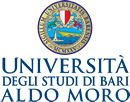STUDENT-CENTERED LEARNING AND TEACHING PROCESS: TWO LECLESSES PLANS WITH PROCEDURES AND IMPLEMENTATION MODES
DOI:
https://doi.org/10.15162/1970-1861/1482Parole chiave:
Assessment, Communication, Learning, Lecless, Lifelong Learning.Abstract
Drawing from the Routledge International Handbook of Student-centered Learning and Teaching (2021) and Bari’s Convention on Academic Didactic Innovation (2018), while bearing in mind the most relevant theories of modern pedagogy along with the consequent practical implementations of glottodidactics, this article focuses on the objectives of the EU program ET 2020.
Great relevance is granted to the learning-teaching approach and the new roles of students and teachers, exemplified through a “lecless” sample plan with objectives, times, number and role of students involved, procedures and assessment. Some works presented by university students during their English classes are finally included.
Riferimenti bibliografici
Barr R. B., Tagg, J., 1995, “From teaching to learning. A new paradigm for undergraduate education”, in Change, 27(6), pp. 12-25.
Barsch J., 1991, Learning Styles Inventory, Novato, CA, Academic Therapy Publications.
Corbo F., Michelini M., Uricchio A.F. (eds.), 2019, Innovazione didattica universitaria e strategie degli atenei italiani. 100 contributi di 27 università a confronto, Bari, Università degli Studi di Bari.
Coyle D., Hood P., Marsh D., 2010, CLIL: Content and Integrated Language Learning, Cambridge, Cambridge University Press.
European Commission, “Education and Training 2020. Highlights from the ET2020 Working Groups 2016-2017”, retrieved from https://education.ec.europa.eu/sites/default/files/document -library-docs/education-training-et2020-working-groups-2016-2017_en.pdf (last access 22.06.2022)
Eyler J. R., 2018, How Humans Learn: The Science and Stories behind Effective College Teaching, 1st edition, Morgantown, WV, West Virginia University Press.
Hoidn S., Klemenčič M. (eds.), 2021, The Routledge International Handbook of Student-centered Learning and Teaching in Higher Education, London, Routledge.
Intorcia E., Pepicelli, E., 2021, “Key Theoretical Principles to Implement the Student-Centered Learning and Teaching Process”, in International Journal of Business and Applied Social Science, 7(10).
Intorcia E., Pepicelli E., 2017, English for Me, Roma, Aracne.
Kleinmann H. H., Selekman H. R., 2008, “The dicto-comp revisited”, in Foreign Language Annals, 13(5), pp. 379–83.
Pepicelli E., 2021, “Student-Centered Learning and Teaching Processes (SCLTPs): Old Assumptions and New Approaches”, in International Journal of Business and Applied Social Science, 7(1).
Róg T., 2014, “The Shaping of Applied Linguistics and the Emergence of Glottodidactics”, in Applied Linguistics, 9, pp. 117-131.
Tagg J., 2019, The Instruction Myth: Why Higher Education Is Hard to Change, and How to Change It, New Brunswick, NJ, Rutgers University Press.
Tauber R.T., 2007, Classroom Management. Sound Theories and Effective Practice, 4th edition, Westport, CT, Praeger.
UN - United Nations, 1987, “Report of the World Commission on Environment and Development: Our Common Future”.
“What Are the Most Innovative Learning Strategies for Modern Pedagogy?”, retrieved from https://www.teachthought.com/the-future-of-learning/innovative-strategies/ (last access 22.06.2022)





